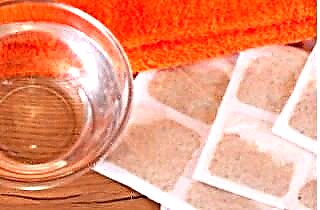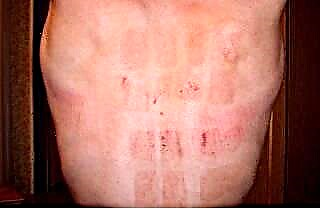This method of treating cough, like mustard plasters, is probably familiar to everyone from childhood. The baking leaves were placed on the back or on the chest, and lying with them quietly for 10-15 minutes seemed like a real punishment. But is this torture really justified? How and when mustard plasters help with coughing, is it possible for everyone to do them - let's figure it out together.
Mechanism of action
Moms love mustard plasters so much because it is a completely natural and proven remedy for more than one generation. And the fact that you can buy them in every pharmacy speaks of their popularity and that this remedy was recognized and approved by official medicine. But how do they work? Indeed, apart from mustard powder, which is poured into non-woven bags divided into sections or applied in an even layer on a thick sheet of paper, there is nothing.
 They are essentially home physiotherapy treatments. They work as follows:
They are essentially home physiotherapy treatments. They work as follows:
- upon contact with water, mustard powder actively releases organic acids;
- the active ingredients irritate the skin, causing a rush of blood not only under the skin, but also in the organs below;
- increased blood circulation creates an additional flow of oxygen and a warming effect;
- thus, in the place where the mustard plaster is located, metabolic processes are accelerated;
- due to stimulation, inflammatory processes are stopped, and the pain effect distracts from other unpleasant sensations.
From the above, it is clear that baking sachets may not always work effectively, since they are not a medicine. Mustard plasters help well with dry cough, when sputum discharge is difficult.
If the cough is caused by allergies and pathogenic microorganisms, then the cause must be eliminated first. So for any cough, you should not use this rather painful remedy - it has clear indications.
How to apply
 The use of mustard plasters is most effective at the stage of recovery, when active inflammation subsides, and the cough continues as a residual phenomenon. In this case, deep heating contributes to a more active course of recovery processes and quickly relieves cough.
The use of mustard plasters is most effective at the stage of recovery, when active inflammation subsides, and the cough continues as a residual phenomenon. In this case, deep heating contributes to a more active course of recovery processes and quickly relieves cough.
You can successfully use this remedy for other diseases that provoke a cough, but here you still need to know where to put mustard plasters when coughing in each case, since the effectiveness of their effect depends on this by 90%.
Here's how to apply them correctly:
- ARI, colds, rhinitis - the back surface of the calves, soles of the feet, the area of the 7th cervical vertebra;
- pharyngitis, tracheitis - the upper part of the chest under the jugular cavity;
- chronic bronchitis, pneumonia - the area of the lungs in the costal zone of the chest (front, back, side).
But this is not all the secrets of mustard plasters. There are places on the body where it is categorically contraindicated to put them. These are the mammary glands in women and the nipples in men, the spinal column, the heart area.
It makes no sense to place mustard plasters on the shoulder blades - they will not reach the internal organs through the dense solid bone, but will only irritate the skin.
How to put correctly
To maximize the effect of treatment, you need to know not only where, but also how to correctly put mustard plasters when coughing. This is how this simple procedure should be performed:
 You need to prepare everything you need in advance: mustard plasters, a bowl of warm water, a terry towel, a clean gauze napkin and a soothing body cream (you can use a regular child's).
You need to prepare everything you need in advance: mustard plasters, a bowl of warm water, a terry towel, a clean gauze napkin and a soothing body cream (you can use a regular child's).- The patient's skin in the places selected for the installation of the mustard plaster should be dry, clean and undamaged.
- If the mustard plaster is a honeycomb bag of powder, be sure to shake it so that the mustard is evenly distributed, and not collected in piles.
- In turn, dip the mustard plaster in warm water and place it on the selected area of the skin with the mustard side to the body.
- Cover everything on top with a terry towel. If mustard plasters are installed on calves, then fix them with an elastic bandage or high knee socks. Wear warm socks on your feet.
 The time of the procedure is strictly individual. We must focus on not having too strong a burning sensation. On average, it ranges from 7 to 10 minutes. Maximum - up to 15.
The time of the procedure is strictly individual. We must focus on not having too strong a burning sensation. On average, it ranges from 7 to 10 minutes. Maximum - up to 15.- Then remove the mustard plasters, and gently but thoroughly wipe the skin with a gauze cloth soaked in warm water.
- Wipe the reddened area dry with a towel (get wet, not rub, so as not to irritate the skin further), lubricate with a soothing cream.
- Cover the patient with a warm blanket and lie quietly for at least half an hour. Better to do the procedure before bedtime.
- After the mustard plasters have been placed, it is highly undesirable to go outside and it is imperative to make sure that the patient is not in a draft or under a working air conditioner.
Important! If during the procedure strong pain occurs, remove the mustard plasters immediately!
If your skin is too sensitive, try protecting it a bit from severe irritation. This can be done in two ways: by covering it with gauze folded in half before the procedure, or by greasing it with a thick layer of fatty nourishing cream. But one must remember that the therapeutic effect of mustard plasters is based precisely on their irritating effect on the skin.
In rare cases, there is an individual intolerance to mustard powder or the components it contains. It usually manifests itself as a strong skin reaction: rashes, blisters, spots on the skin.
The first sign of an allergy is severe itching, which is felt literally a couple of minutes after installing the mustard plaster. If it appears, remove the mustard plaster immediately, wash the skin well and take an antihistamine.
Even knowing how to put mustard plasters when coughing, you still need to be careful and be guided during the procedure, first of all, by the individual feelings and reactions of the patient. You can repeat the procedure no more often than every other day. The maximum course duration is 10 days. In addition, there are a number of contraindications for using this remedy.
Contraindications and precautions
Contraindications to the use of mustard plasters are due to their highly irritating local skin, as well as vasodilating effects. Their use is categorically contraindicated for:
- an increase in body temperature above 37.2;
- blood clotting disorders;
- pulmonary and other internal bleeding;
- oncology and any neoplasms;
- violation of the integrity of the skin at the place of setting;
- chronic skin diseases, warts, dermatitis;
- increased or too low sensitivity of the skin;
- individual intolerance to mustard.
It is undesirable to use mustard plasters to treat cough in infants - it is very easy to burn thin and delicate skin. Mustard plasters are ineffective for angina, and with purulent ones, they can even provoke the spread of infection and inflammation of the lymph nodes.
During pregnancy and lactation, you can be treated with mustard plasters - this is a completely safe remedy. But it must be borne in mind that if you put mustard plasters on the calves or feet, they can increase blood circulation in the entire lower body. Therefore, in the early stages of pregnancy, or when the uterus is in good shape, it is better not to use them in these areas.
It is also important to ensure that mustard plasters do not cause chemical burns to the skin. 7-10 minutes is enough for the remedy to have a positive effect on the selected area of the body. It is impossible to endure severe pain and “to lie longer to warm up deeper”.Each has its own individual threshold of sensitivity, so there cannot be the same time range for all. After removing the mustard plasters, a slight redness should remain on the skin, and not a purple spot.

 You need to prepare everything you need in advance: mustard plasters, a bowl of warm water, a terry towel, a clean gauze napkin and a soothing body cream (you can use a regular child's).
You need to prepare everything you need in advance: mustard plasters, a bowl of warm water, a terry towel, a clean gauze napkin and a soothing body cream (you can use a regular child's). The time of the procedure is strictly individual. We must focus on not having too strong a burning sensation. On average, it ranges from 7 to 10 minutes. Maximum - up to 15.
The time of the procedure is strictly individual. We must focus on not having too strong a burning sensation. On average, it ranges from 7 to 10 minutes. Maximum - up to 15.

